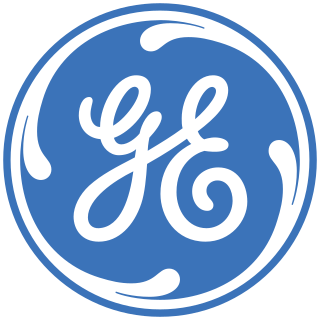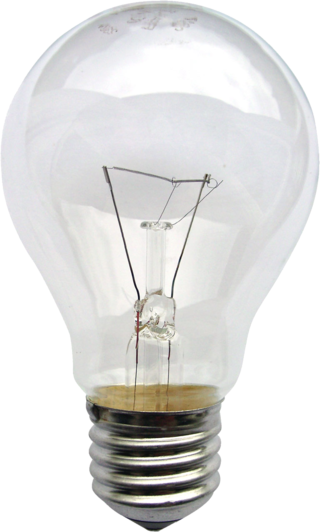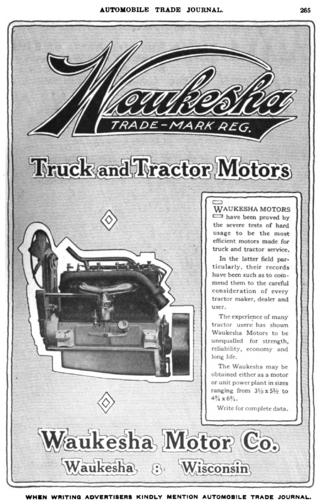
An electric light, lamp, or light bulb is an electrical component that produces light. It is the most common form of artificial lighting. Lamps usually have a base made of ceramic, metal, glass, or plastic, which secures the lamp in the socket of a light fixture, which is often called a "lamp" as well. The electrical connection to the socket may be made with a screw-thread base, two metal pins, two metal caps or a bayonet mount.

General Electric Company (GE) was an American multinational conglomerate founded in 1892, incorporated in the state of New York and headquartered in Boston. The company had several divisions, including aerospace, energy, healthcare, and finance.

Thomas Alva Edison was an American inventor and businessman. He developed many devices in fields such as electric power generation, mass communication, sound recording, and motion pictures. These inventions, which include the phonograph, the motion picture camera, and early versions of the electric light bulb, have had a widespread impact on the modern industrialized world. He was one of the first inventors to apply the principles of organized science and teamwork to the process of invention, working with many researchers and employees. He established the first industrial research laboratory.

An incandescent light bulb, incandescent lamp or incandescent light globe is an electric light with a filament that is heated until it glows. The filament is enclosed in a glass bulb that is either evacuated or filled with inert gas to protect the filament from oxidation. Electric current is supplied to the filament by terminals or wires embedded in the glass. A bulb socket provides mechanical support and electrical connections.

Mains electricity or utility power, grid power, domestic power, and wall power, or, in some parts of Canada, hydro, is a general-purpose alternating-current (AC) electric power supply. It is the form of electrical power that is delivered to homes and businesses through the electrical grid in many parts of the world. People use this electricity to power everyday items by plugging them into a wall outlet.

Thorn Lighting Ltd, a subsidiary of the Zumtobel Group, is a global supplier of both outdoor and indoor luminaires and integrated controls.

Montreal Locomotive Works (MLW) was a Canadian railway locomotive manufacturer that existed under several names from 1883 to 1985, producing both steam and diesel locomotives. For many years it was a subsidiary of the American Locomotive Company. MLW's headquarters and manufacturing facilities were in Montreal, Quebec.

A compact fluorescent lamp (CFL), also called compact fluorescent light, energy-saving light and compact fluorescent tube, is a fluorescent lamp designed to replace an incandescent light bulb; some types fit into light fixtures designed for incandescent bulbs. The lamps use a tube that is curved or folded to fit into the space of an incandescent bulb, and a compact electronic ballast in the base of the lamp.
Hotpoint is a brand of domestic appliances. Ownership of the brand is split between American company Whirlpool, which has the rights in Europe, Chinese company Haier, which has the rights in the Americas and Turkish company Arcelik which has rights in Russia and the CIS.
Mabe is a Mexican company that designs, produces, and distributes appliances to more than 70 countries around the world. It was founded in Mexico City in 1946.

Tungsram was a manufacturing company located in Hungary and known for their light bulbs and electronics. Established in Újpest in 1896, it initially produced telephones, wires and switchboards. The name "Tungsram" is a portmanteau of tungsten and wolfram, the two common names of the metal used for making light bulb filaments. Before becoming nationalized by the Communist government in 1945, the company was the world's third largest manufacturer of light bulbs and radiotubes, after the American General Electric and RCA companies.

The Edison Illuminating Company was established by Thomas Edison on December 17, 1880, to construct electrical generating stations, initially in New York City. The company was the prototype for other local illuminating companies that were established in the United States during the 1880s.

Mazda was a trademarked name registered by General Electric (GE) in 1909 for incandescent light bulbs. The name was used from 1909 to 1945 in the United States by GE and Westinghouse. Mazda brand light bulbs were made for decades after 1945 outside the US. The company chose the name due to its association with Ahura Mazda, the transcendental and universal God of Zoroastrianism whose name means light of wisdom in the Avestan language.

John Inglis and Company was a Canadian manufacturing firm which made weapons for the United Kingdom and British Commonwealth military forces during the World War II era, then later became a major appliance manufacturer. Whirlpool Corporation acquired control of Inglis in 1987 and changed the company's name to Whirlpool Canada in 2001. Today the Inglis name survives as a brand under Whirlpool.

Waukesha is a brand of large stationary reciprocating engines produced by INNIO Waukesha Gas Engines, a business unit of the INNIO Group. It builds large gas engines and related industrial equipment for natural gas compression and for power generation.

Edison screw (ES) is a standard lightbulb socket for electric light bulbs. It was developed by Thomas Edison (1847–1931), patented in 1881, and was licensed in 1909 under General Electric's Mazda trademark. The bulbs have right-hand threaded metal bases (caps) which screw into matching threaded sockets. For bulbs powered by AC current, the thread is generally connected to neutral and the contact on the bottom tip of the base is connected to the "live" phase.

Tung-Sol was an American manufacturer of electronics, mainly lamps and vacuum tubes.

George Francis Morrison (1867–1943), was an American business executive, industrialist, Edison Pioneer, and a Director and Vice President of General Electric Company. He was one of Thomas Edison's closest associates and a pioneer in the production of the incandescent lamp. Towards the latter part of his decades-long career, Morrison traveled the world introducing the lamp and promoting its use.
The Moffat Stove Company, Limited was established in 1892 in Weston, Toronto, Ontario and manufactured stoves and ranges that have been widely distributed across the continent and even used extensively in Europe and Asia. Moffat Stoves are credited with inventing the first electric ranges for the domestic market. And although the Moffat family sold the business in 1953, stoves and refrigerators continued to be built at the Weston plant until the early 1970s.
Cornwall Street Railway Light and Power Company Limited, operating as Cornwall Electric, is an electricity transmission and distribution utility, licensed by the Ontario Energy Board (OEB) to operate in Cornwall, Ontario, Canada. Originally established in 1887 as the Stormont Electric Light and Power Company and merged with the Cornwall Electric Street Railway Company in 1905, it is one of the oldest utilities in Canada.


















